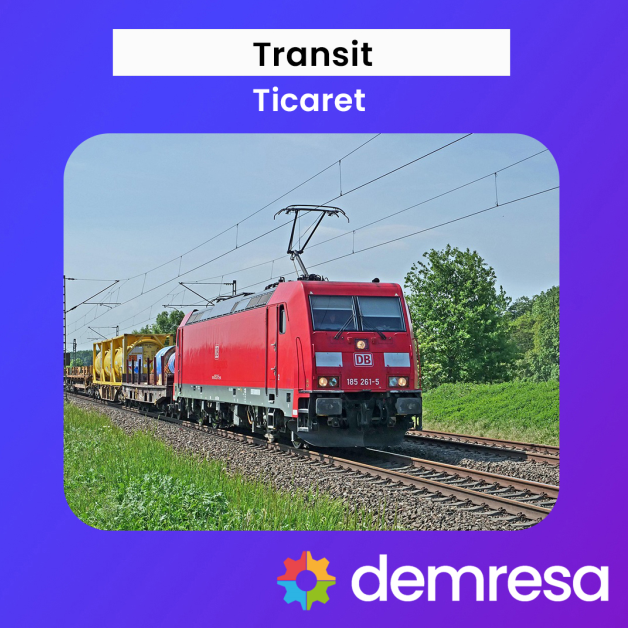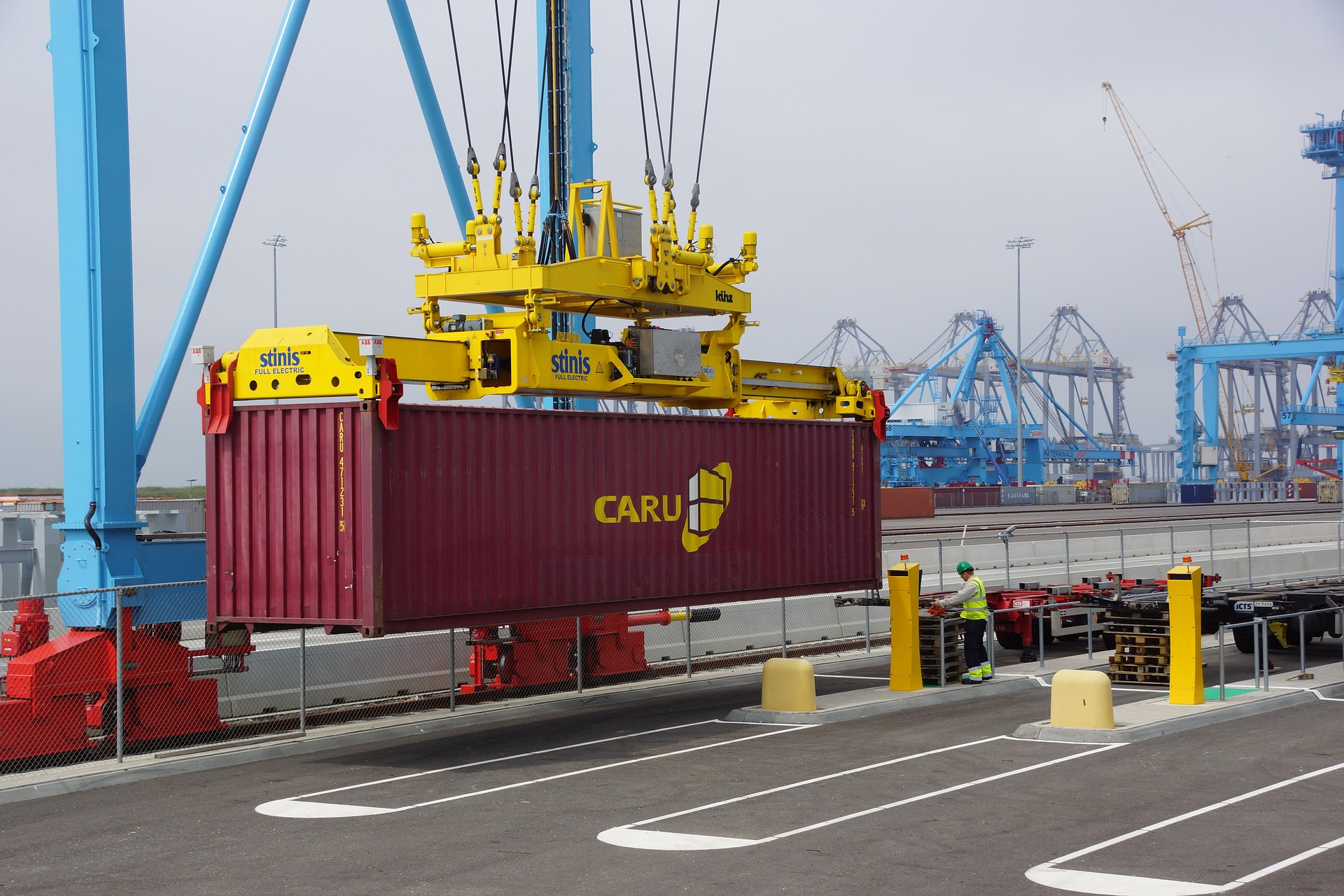
What is Transit Trade and How Is It Conducted?
Transit trade is the process in which goods or products pass through a country or region and are delivered to a third country. This trade model means that goods only pass through countries other than their final destination, usually providing customs procedures, tax advantages, and logistical convenience.
In transit trade, goods are generally kept under a special customs status called the transit regime. Thanks to this status, goods move within the transit country without being subject to import taxes or other duties. Thus, transit trade provides cost and time advantages for both exporters and importers.
To perform transit trade, customs procedures under the transit regime must be carried out correctly and completely. The required documents must be prepared in the country of departure, and transit countries’ customs authorities must be informed. Moreover, transportation and logistics processes must be meticulously planned.
Important Note
Transit trade saves time and cost in cross-border trade and increases the efficiency of the supply chain. However, full compliance with customs regulations is required.
Advantages and Disadvantages of Transit Trade
While transit trade offers significant opportunities in international trade, it also brings some risks and challenges. This section details the main advantages provided by transit trade as well as the potential disadvantages.
Advantages
- Cost Savings: Thanks to the transit regime, goods are exempt from import duties and some fees in the transit country, reducing total trade costs.
- Time Savings: Simplified customs procedures and fast transit processes allow goods to reach the target market more quickly.
- Customs Facilitation: In transit trade, goods are under a temporary customs status and are not subject to comprehensive import procedures, reducing bureaucratic workload.
- Flexible Logistics: Transit trade allows for the use of different routes and transportation options, optimizing logistics.
- Competitive Power in International Trade: Lower costs and faster delivery give companies an advantage in the global market.
Disadvantages
- Customs Risks: Mistakes or deficiencies in documentation during transit can lead to goods being held at customs or fines being imposed.
- Delays: Border controls, strikes, or logistics issues in the transit country can extend delivery times.
- Security Issues: There is a risk of goods being lost, damaged, or stolen during transit.
- Legal and Regulatory Complexity: Different regulations in countries involved in transit trade can make compliance and tracking challenging for companies.
- Extra Insurance and Costs: Additional insurance may be required against risks during transit, which can increase costs.
Reminder
To maximize the benefits of transit trade, it is important to specialize in customs and logistics processes and to minimize risks.
Practical Examples of Transit Trade
Transit trade is frequently used in various sectors and trade routes. This section provides up-to-date and concrete examples of how transit trade is applied in practice.
For example, a product sent from Turkey to Europe can reach its destination by passing through transit countries such as Bulgaria or Greece. In this process, the product is exempt from customs duties in the transit countries, and only the necessary import procedures are completed in the destination country.
As another example, goods sent from China to Russia can transit through Kazakhstan. In this way, direct logistics lines are used to reduce transportation time and costs.
Example 1: Transit Trade in Textile Products
Turkey - Bulgaria - GermanyTextile products exported from Turkey to Germany are transported under the transit regime through Bulgaria. Thus, the products are not subject to customs duties in Bulgaria, logistics are expedited, and costs are reduced.
Example 2: Transit Passage of Electronic Products
China - Kazakhstan - RussiaElectronic devices sent from China to Russia are transported via Kazakhstan as a transit passage. This route is faster and more economical than direct shipment and is an effective use of transit trade.
Example 3: Transit Practice in Agricultural Products
Brazil - Argentina - ChileAgricultural products sent from Brazil to Chile transit through Argentina. This facilitates trade flow and ensures products reach the target market on time.
Information
Examples of transit trade succeed with proper route selection and regulatory knowledge in logistics planning. Trade processes are optimized with accurate planning.

Transit Trade Invoices and Documents
For transit trade to be carried out smoothly and legally, proper issuance of invoices and documents is of great importance. These documents help track the goods during transit, facilitate customs procedures, and ensure tax exemptions.
The main documents used in transit trade include commercial invoice, bill of lading, transit declaration, certificate of origin, and insurance policy. Each document details the stages the goods pass through and their ownership status.
Key Transit Trade Documents
- Commercial Invoice: The official document showing the type, quantity, price, and buyer-seller information of the goods. It serves as proof of the value and identity of the goods during the transit process.
- Bill of Lading: A document certifying the goods have been handed over to the carrier and formalizing the transportation process.
- Transit Declaration: The official document submitted to customs authorities indicating that goods are under the transit regime. This declaration ensures transit duties are not applied.
- Certificate of Origin: The document proving the country where the goods were produced or shipped, offering preferential advantages in some customs procedures.
- Insurance Policy: Prepared to secure goods against possible damage, loss, or theft during transit.
Points to Consider
Ensuring that documents are complete and accurate allows transit trade to proceed without interruption. Each document must comply with international standards and be submitted to the relevant authorities on time.
Frequently Asked Questions About Transit Trade
The most frequently asked questions and answers about transit trade are compiled in this section. You can find detailed information on the operation, advantages, documents, and risks of transit trade.
What is transit trade?
Transit trade is the process of delivering goods to another country by passing through the borders of a third country. In this process, goods are exempt from customs duties in the transit country.
How is transit trade conducted?
Transit trade is conducted by completing customs procedures under the transit regime and preparing the necessary documents. The transportation process is planned and goods pass through the transit country.
What are the advantages of transit trade?
Cost savings, time efficiency, customs facilitation, and logistical flexibility are the main advantages.
Which documents are required for transit trade?
Commercial invoice, bill of lading, transit declaration, certificate of origin, and insurance policy are the key documents.
What are the main risks in transit trade?
Delays at customs, mistakes in documents, and goods being damaged or lost are the most significant risks.
Can transit trade be practiced in all countries?
Each country has its own transit trade regulations. Therefore, application conditions and processes may vary from country to country.
Additional Information
Receiving expert consultancy in transit trade is useful to ensure smooth processes.
